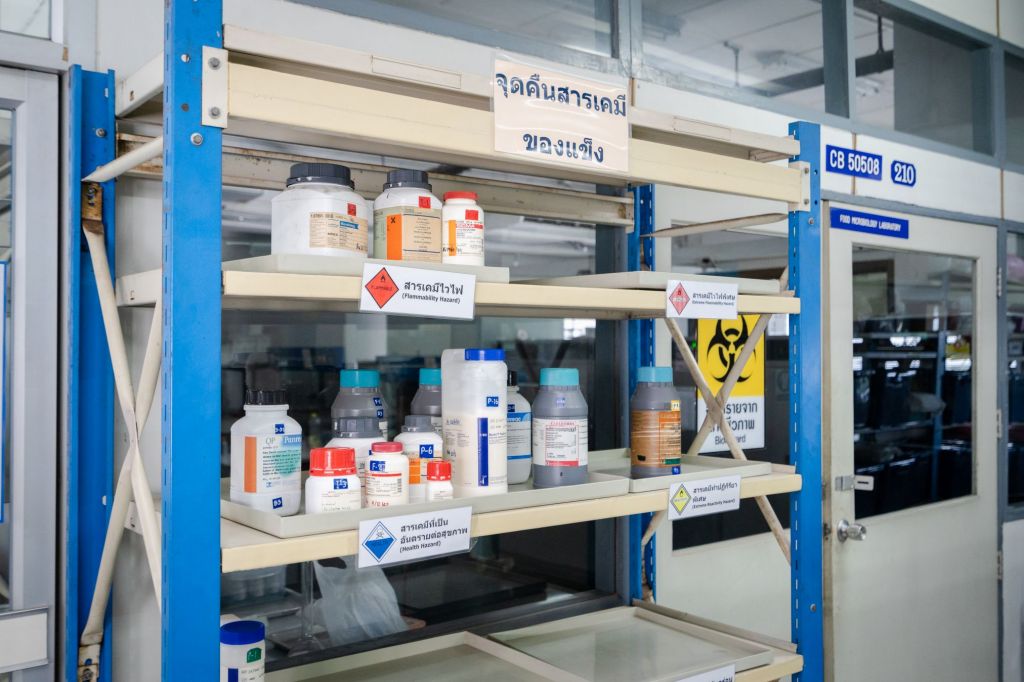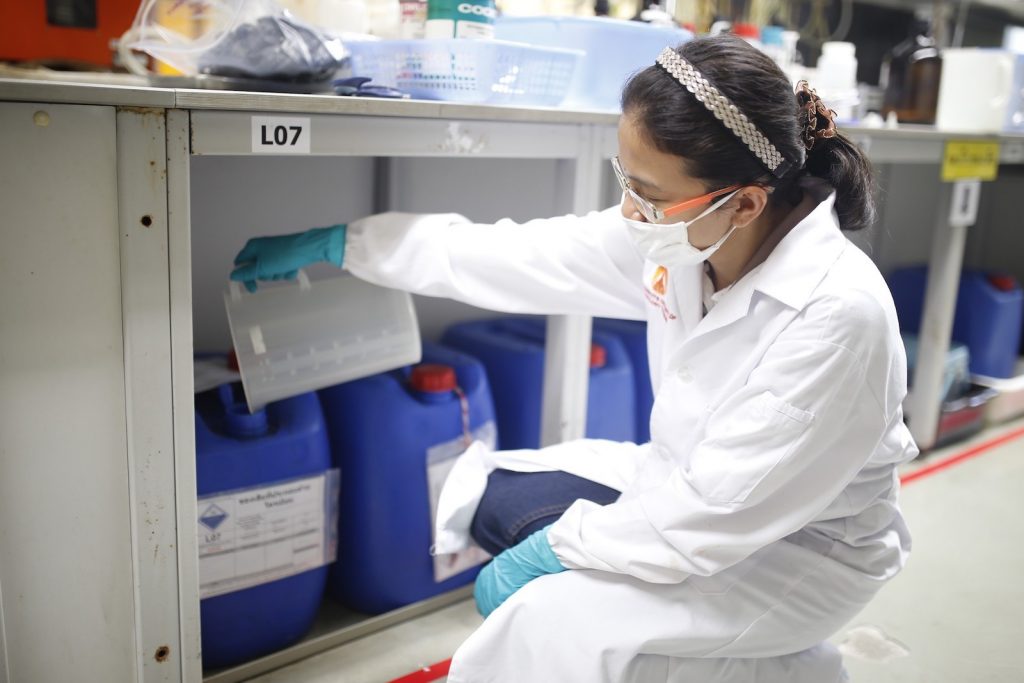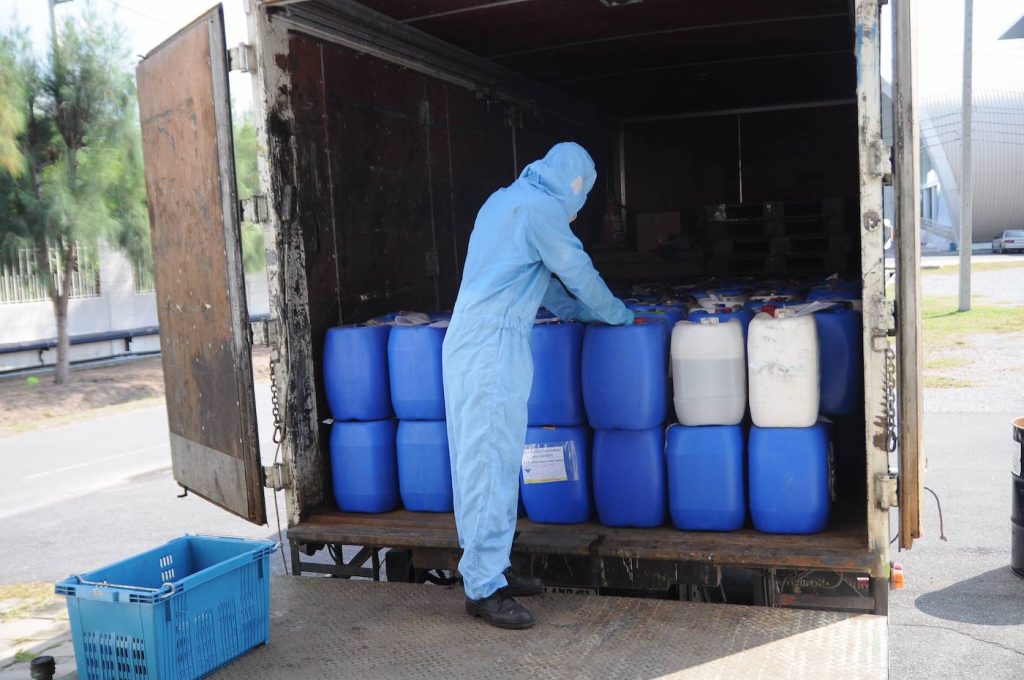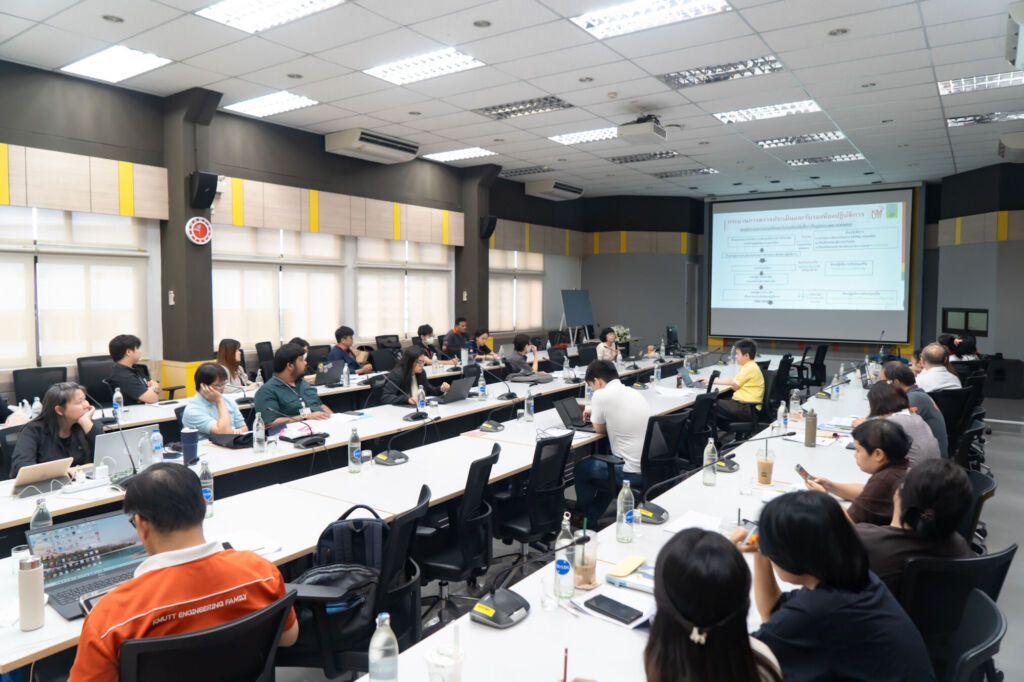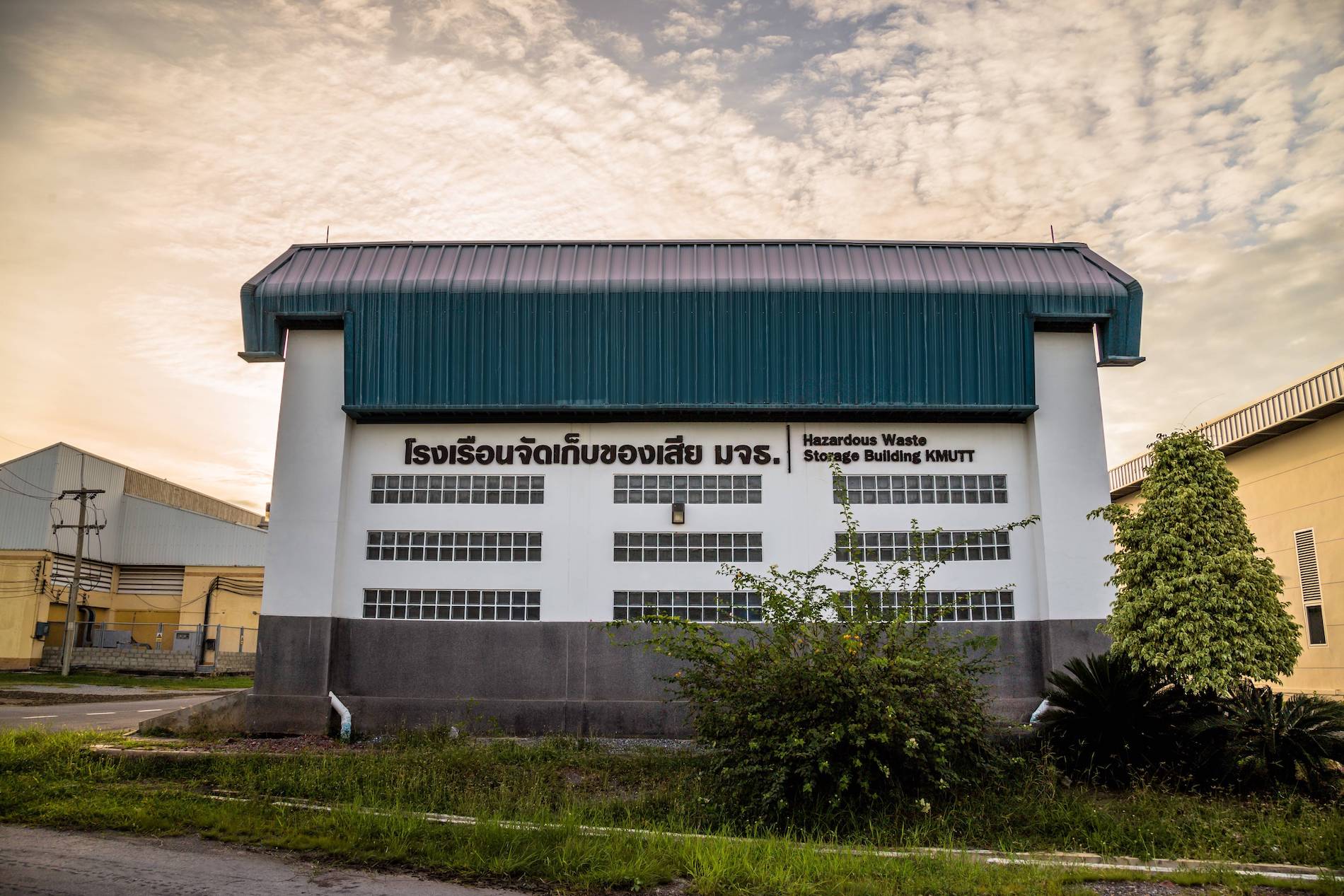
KMUTT is committed to the proper management of environment especially chemical substance and hazardous waste from education and research activities. More than 2,000 chemical substances are handled in educations and researches laboratories and nearly 12 tons of Hazardous waste was generated in each year. The chemical management system and hazardous waste management system have been developed since 2005.
Target: 100 % of toxic waste generate in KMUTT have been treated in standard practice.
Current Status: In 2025, 100 % of toxic waste generate in KMUTT have been treated in standard practice.
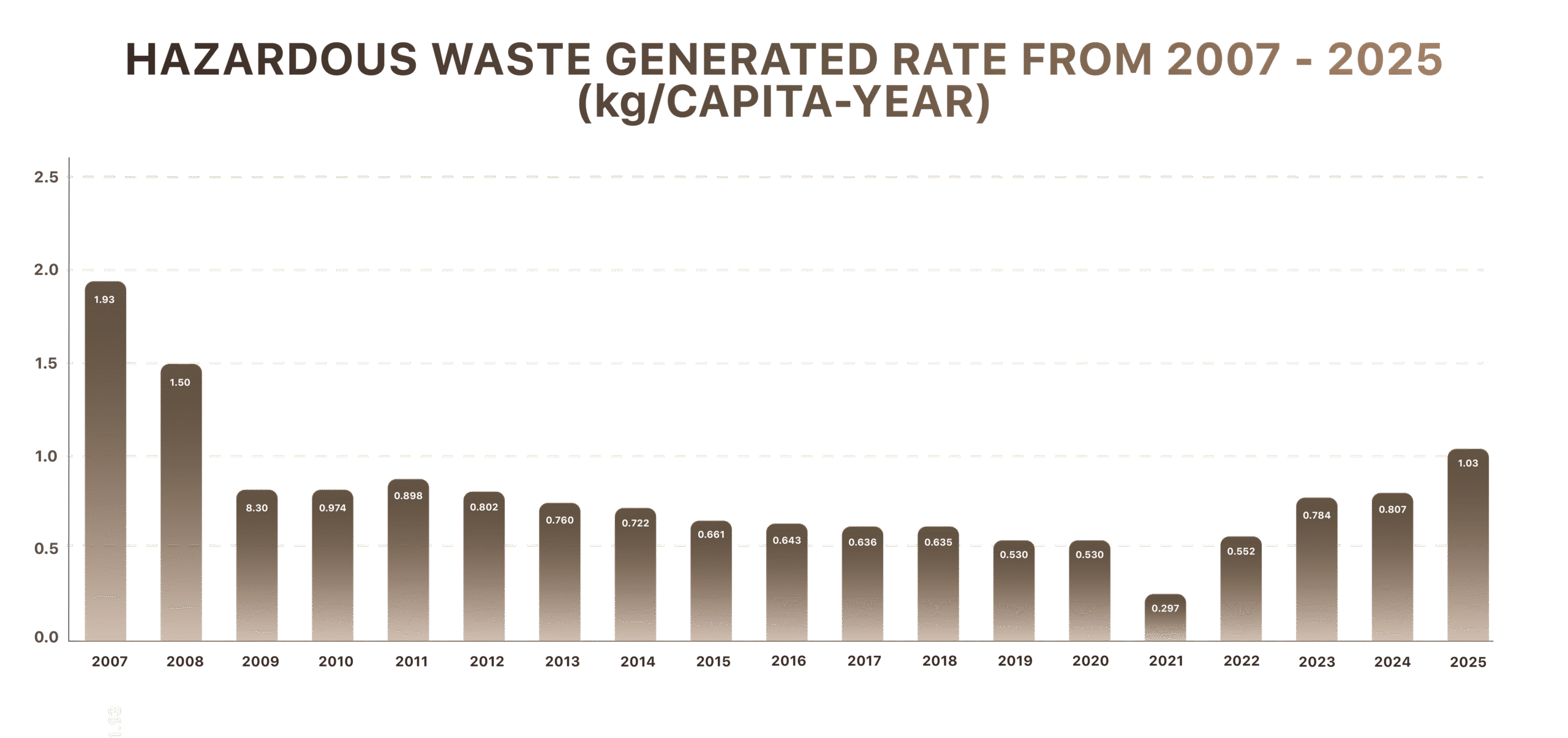
Target: 70 % of Hazardous waste reduction by 2030 compared to 2007 baseline
Current Status: In 2025, 46.58 %of Hazardous waste reduces compared to 2007 baseline
At KMUTT, Hazardous Waste Management is a multi-step process involving waste segregation, collection, reuse/recycling, treatment, and disposal to ensure the safe and compliant handling of toxic waste on campus.
1. Segregated Waste Handling
Hazardous waste management at KMUTT distinguishes between toxic waste generated from municipal solid waste (MSW) and waste arising from educational and research activities. Toxic MSW is safely managed and outsourced to the Bangkok Metropolitan Administration (BMA) with thorough documentation, ensuring proper disposal.
2. Secure Waste Collection and Storage
All hazardous waste collected is stored at the Hazardous Waste Storage Building on KMUTT’s Bangkhuntein campus. This facility adheres strictly to WHO standards, with waste containers kept off the ground and under cover to prevent any potential leakage. The storage setup ensures minimal environmental risk and complies with international safety standards.
3. Monitoring and Record-Keeping
KMUTT meticulously records the daily volume of hazardous waste generated. This data is tracked and reported as part of the university’s commitment to transparent and effective waste management, helping to identify trends, optimize processes, and maintain safety standards.
Through these proactive measures, KMUTT safeguards both the campus and surrounding environment, setting a standard in responsible hazardous waste management and reinforcing the university’s dedication to sustainability and public health.
WASTES GENERATION FROM LABORATORY
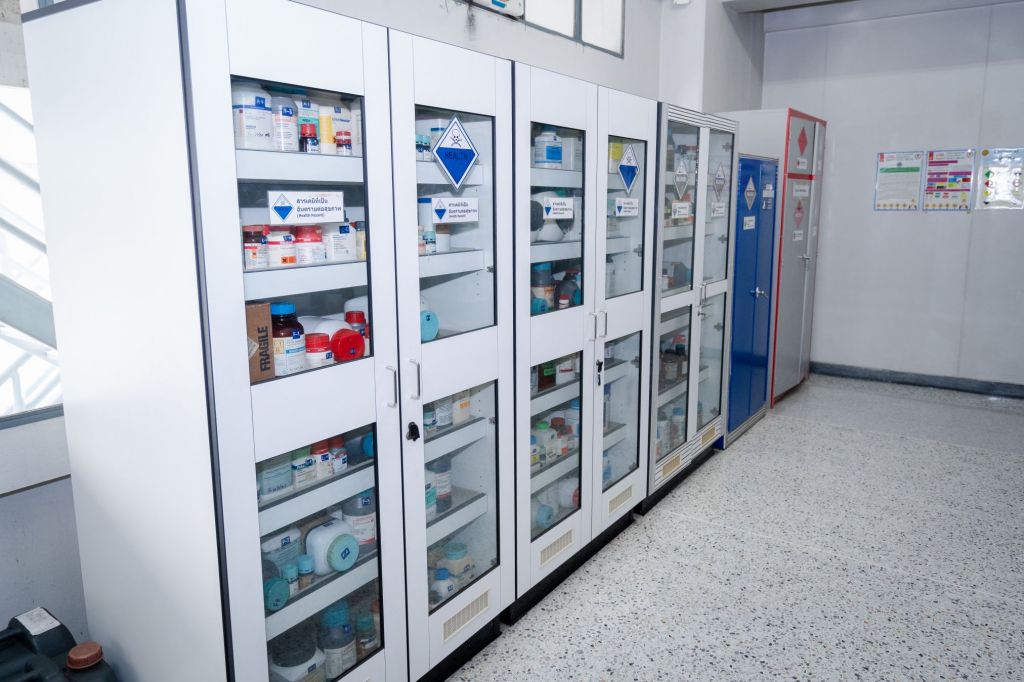
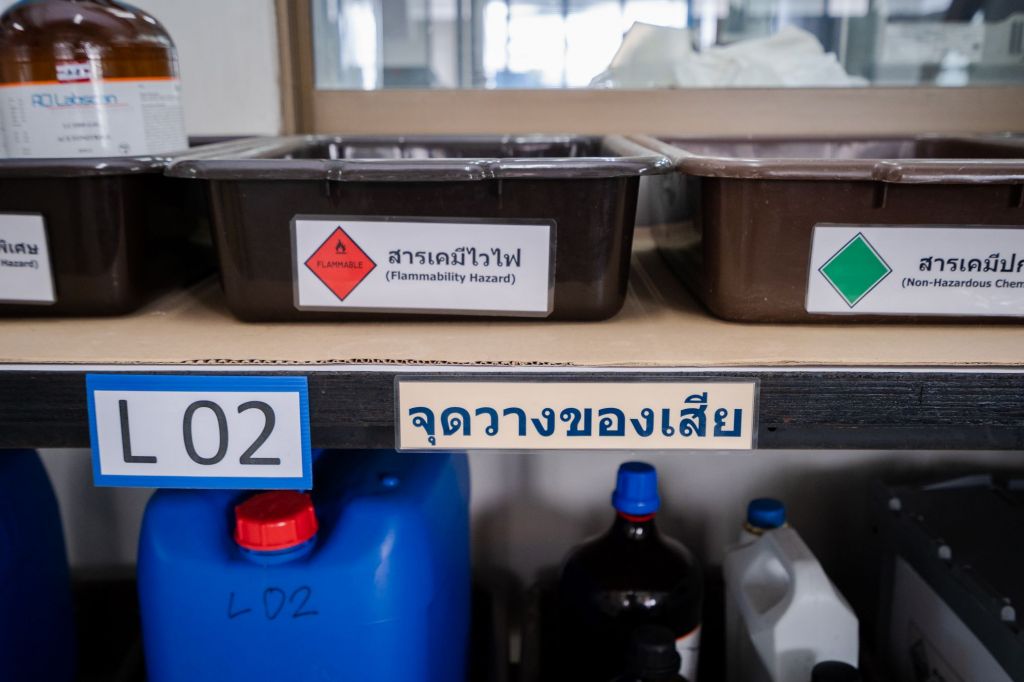

The main concept of system is chemical substance collection (Ignitability, Corrosivity, Reactivity and Toxicity), storage and disposal of waste.In recent year, system is continue improving and developing under the standard of Enhancement of Safety Practice of Research Laboratory in Thailand (ESPReL). This system is consists of three steps, including of waste segregation, waste storage and collection and waste treatment. To ensure that hazardous waste is handled in a good manner that protects human health and the environment, hazardous waste container have been provided to all laboratories according to laboratory request form which is one category in Hazardous waste segregation manual.
Targets:
- 40% of hazardous waste are reused / recycled by 2030
- 20% of Hazardous Waste are prepared for onsite waste treatment by 2030
Current Status:
- In 2025, 54.29% of Hazardous waste are reused and recycled compared to 2015 baseline
- In 2025, 54.56% of Hazardous Waste are prepared for onsite waste treatment compared to reduce waste management cost compared to 2015 baseline
Hazardous wastes reuse and recycle
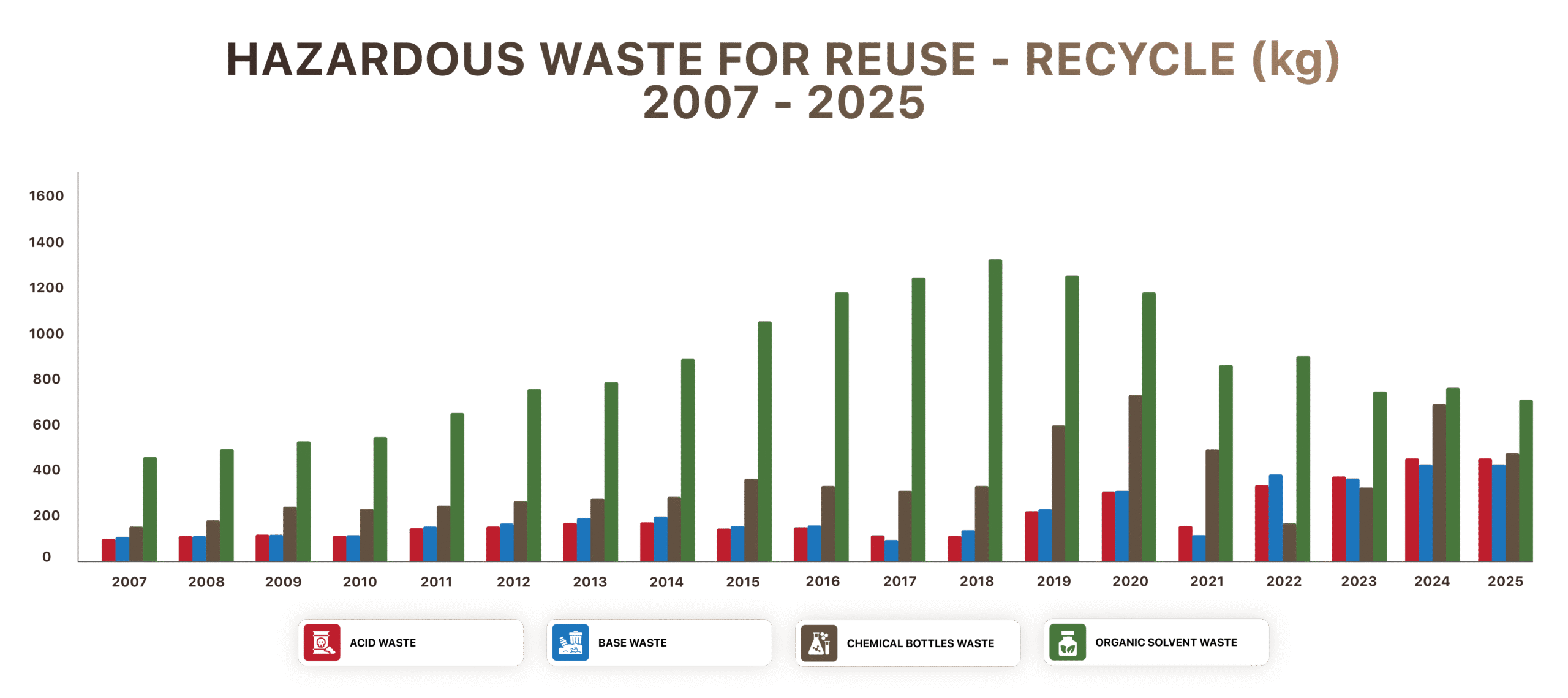
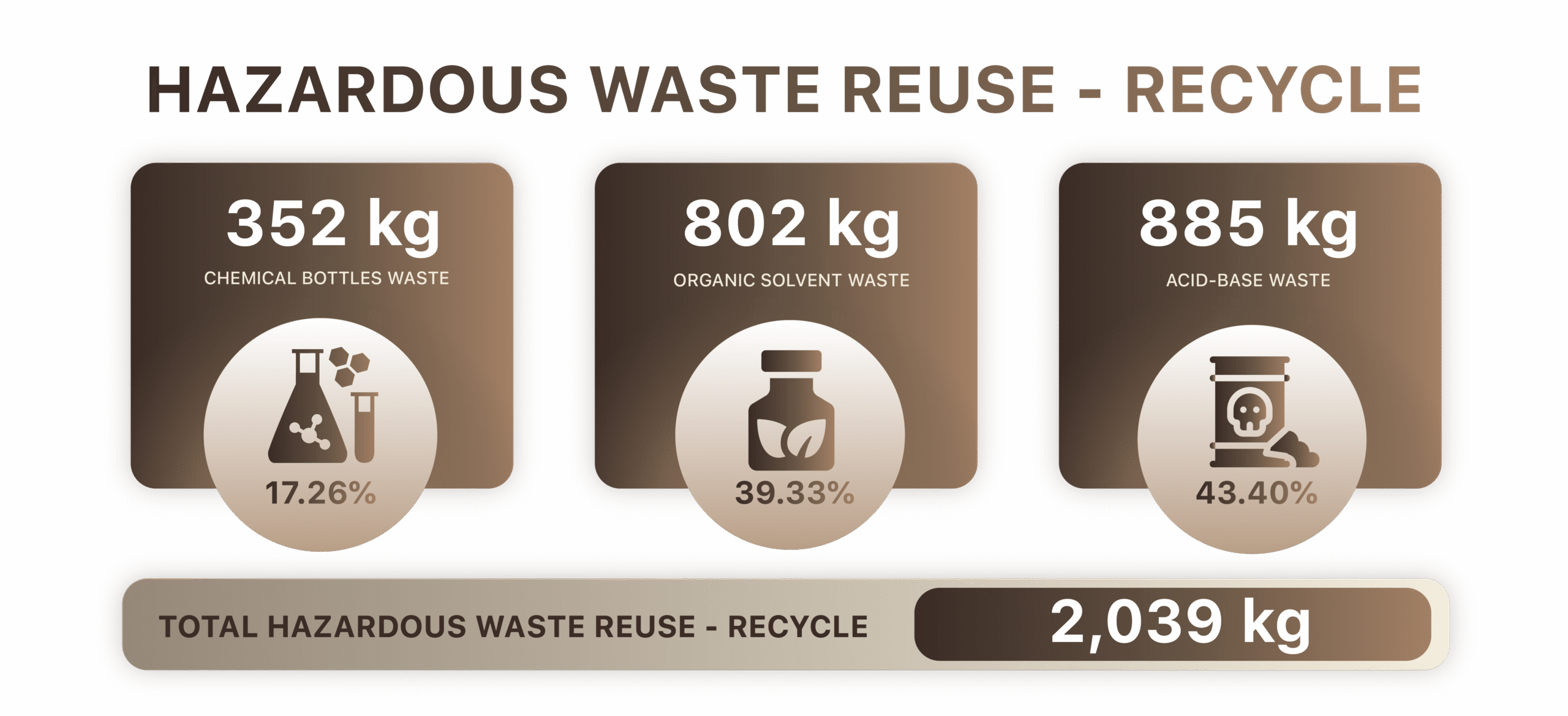
Hazardous waste Onsite treatment
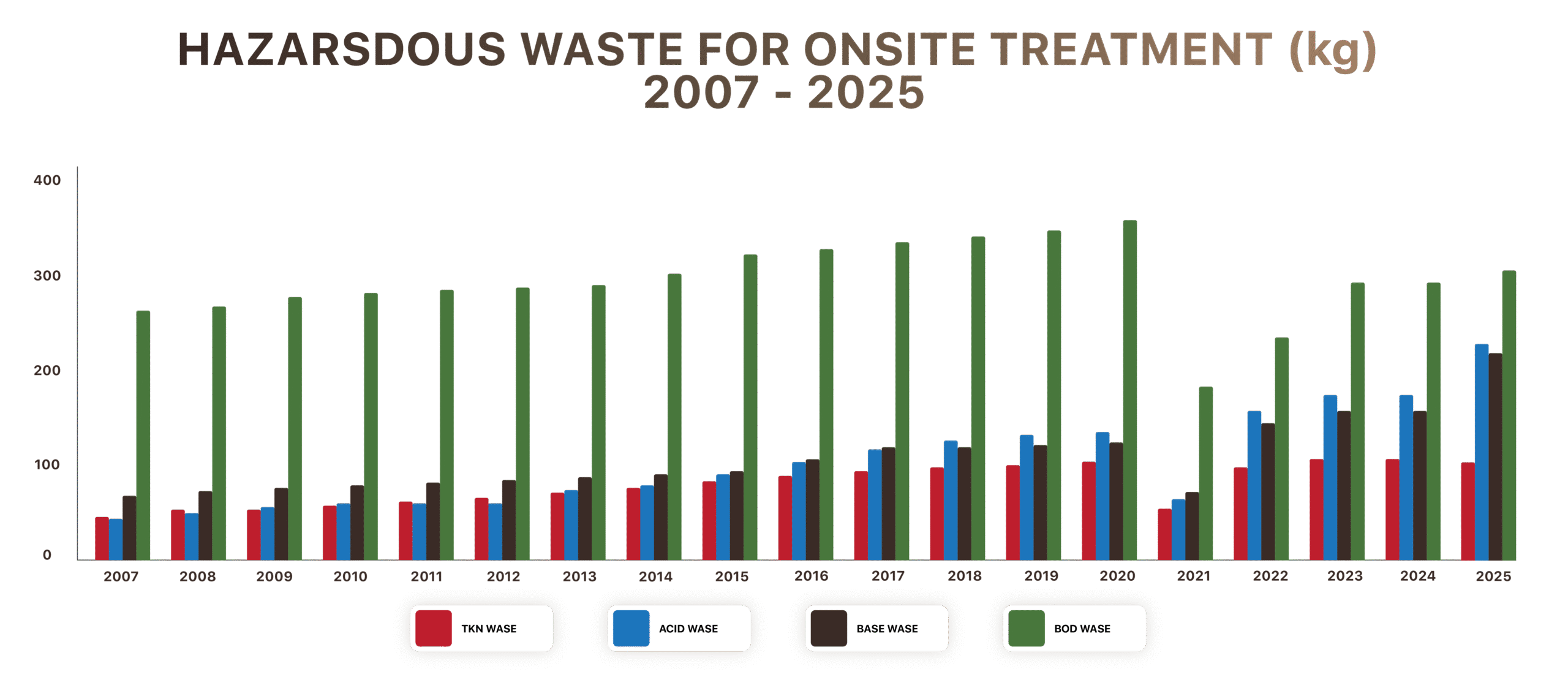

Hazardous Waste Management Training
Hazardous Waste Management Training at KMUTT: Strengthening Competence and Safety in Laboratory Practices
Recognizing the importance of safe and responsible hazardous waste management in academic and research environments, King Mongkut’s University of Technology Thonburi has developed a systematic training framework to ensure that all personnel students, researchers, and staff understand and adhere to proper waste management practices in accordance with national regulations and university standards.
The Hazardous Waste Management Training Program at KMUTT integrates both theoretical and practical components, emphasizing risk awareness, waste segregation techniques, labeling, temporary storage, and proper disposal procedures. The program aims to cultivate a culture of safety and environmental responsibility across all operational levels within the university.
In 2025, a total of 5,800 participants including students, academic personnel, and laboratory technicians completed the training. To sustain high safety standards, KMUTT organizes five dedicated training sessions annually for laboratory personnel, focusing on comprehensive hazardous waste management, from classification and containment to final treatment and disposal.
As a result, the Hazardous Waste Management System has been successfully implemented across all laboratories and research units at KMUTT. The program not only strengthens the university’s compliance with environmental and safety regulations but also enhances institutional capacity in managing chemical and biological hazards responsibly.
Through continuous training and monitoring, KMUTT reaffirms its commitment to safe, effective, and sustainable hazardous waste management, ensuring that every member of the university community possesses the knowledge and capability to handle hazardous materials with the utmost care and professionalism.
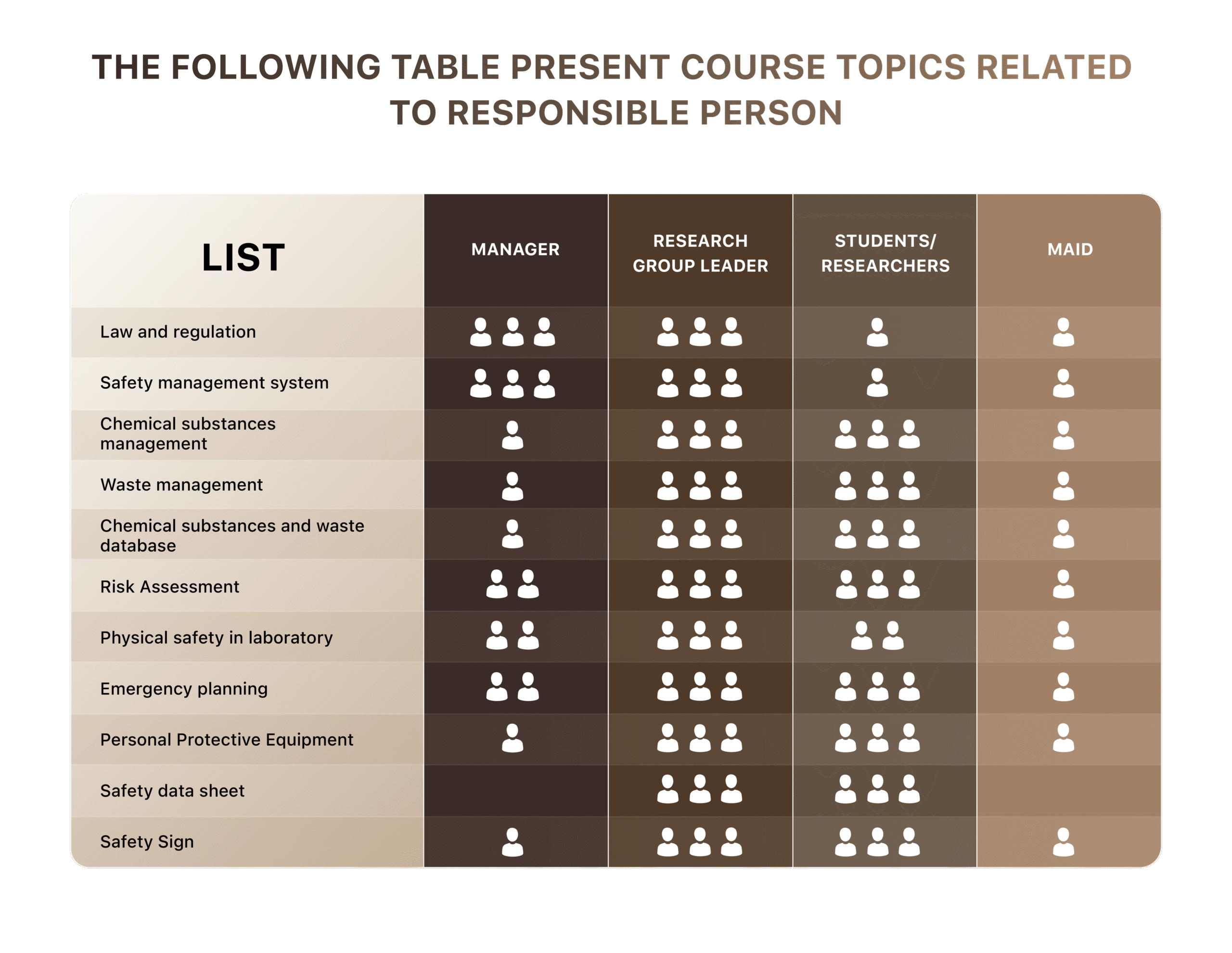
Remark : Number of person in each column of table represent difficulty levels of contents from training program
